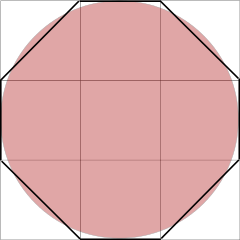Hello my dear steemians, as you know March 14 is celebrated for 30 years, the day of Pi (π), the mathematical constant, is perhaps the only celebration that refers to a number.
As a curious fact, on this day of π the birth of Albert Einstein is also celebrated.
There is no doubt that π has fascinated humanity since time immemorial. In all eras, the most capable mathematicians have devoted part of their time in the search for an algorithm that allows them to calculate their value better or faster.
Source of the Image
Mathematically it is said that π is a ratio, which means that it expresses a relation. In this case the relationship between 2 measurements, the diameter of a circle with the perimeter of it.
- But how many times does the diameter in the perimeter fit?
3 times and 1 little bit more, the interesting thing about π is in that little bit more, nobody has been able to calculate it with perfect accuracy. More than 3800 years ago an Egyptian scribe named Ahmes gave the first approximation of π when he said. "The area of a circle is similar to the area of a square whose side is 1/9 part smaller than the diameter of the circle".

This gave π an approximate value of 3.16049 and also inaugurated a mathematical problem that lasted for millennia "the square of the circle", the problem is precisely that the value is approximate because π is an irrational number, that means that it can not be expressed As a fraction, 22/7 for example, it approaches π but it is not the same.
Throughout history there have been many methods to calculate π. Archimedes found a very ingenious one by drawing polygons of more and more sides inscribed and circumscribed in a circle, calculating its perimeters, deduced that the value of Pi was between 3.1408 and 3.1429. Archimedes came to a polygon with 96 sides.

But the Chinese Mathematician Zu Chongzhi used a polygon of 12288 faces and came up with a more precise result, between 3.1415926 and 3.1415927. For thousands of years these approximations have been sufficient for most practical applications. But idle mathematicians continued to find more and more digits throughout history, Newton was ashamed to spend so much time calculating π.
It was between 1671 and 1674 that the Europeans Gregory and Leibniz discovered that a mathematician from India Madhava of Sangamagrama had invented a method called infinite series with which Abraham Sharp calculated 71 digits of π, before the use of the calculator the record of the digits Daniel Ferguson achieved 620 decimals.
By the way, the Greek name "π" was not used by the Greeks but was used for the first time in the 17th century, because the word "π" begins with the word perimeter (περίμετρος), popularized by Leonhard Euler.
Those who like to memorize digits of π are called "Piphilologists". Akira Haraguchi holds the world record, in 2006 he recited 100 thousand digits and it took 16 hours, pausing every hour just to drink water.
This irrational number that belongs to the real numbers, is known since a little over 4,000 years ago and is usually a headache for students, while being praised by mathematicians.
If you liked what you just read do not forget to follow me and support me @jlmol7
The images used in this article can be reused according to your copyright.
